In the world of SUVs, the Renault Scénic and Volvo XC60 stand out for their innovative designs and advanced engineering. Both vehicles cater to the needs of modern families and eco-conscious consumers, but they do so with different approaches and technologies. Let’s dive into an in-depth comparison of these two attractive models.
Renault Scénic vs Volvo XC60 – Differences & prices compared
Compare performance, boot capacity, efficiency and price at a glance.
Find out which car is the better choice for you – Renault Scénic or Volvo XC60?
Design and Dimensions
The Renault Scénic, with its sleek and modern design, measures 4470 mm in length and 1864 mm in width, presenting a compact footprint that's ideal for urban navigation. Its height of 1571 mm gives it a comfortable driving position without sacrificing aerodynamics. On the other hand, the Volvo XC60 takes a bolder approach, stretching to 4688 mm in length and 1902 mm in width while standing taller at 1658 mm. This larger dimension not only provides a more commanding presence on the road but also enhances its interior space.
Powertrain Options and Performance
When it comes to powertrains, the Renault Scénic offers an electric-only lineup with options delivering 170 HP and 220 HP. With a maximum torque of 280 Nm and an impressive acceleration from 0 to 100 km/h in 8.6 seconds for the lower variant and 7.9 seconds for the higher, it offers a zippy performance while promoting eco-friendliness with zero CO2 emissions.
In contrast, the Volvo XC60 showcases a diverse range of power options that include petrol MHEV and Plug-in Hybrid configurations. Engine outputs range from 250 HP to a staggering 455 HP with torque figures reaching up to 709 Nm. This SUV can dash from 0 to 100 km/h in as little as 4.9 seconds in its most powerful iteration, perfectly balancing performance with luxury.
Energy Efficiency
The Renault Scénic shines in efficiency with its electric consumption rated at 16.7 kWh/100 km for the 170 HP version and 17.6 kWh/100 km for the 220 HP variant. An electric range of up to 598 km means longer journeys can be accomplished with confidence, making it a perfect choice for eco-conscious drivers.
The Volvo XC60, while slightly less efficient, offers a unique combination of petrol and hybrid powertrains. Its consumption can be as low as 0.9 L/100 km when operating in electric mode, with its battery providing an electric driving range of approximately 80 km. This allows for short trips to be powered without emissions, while the petrol engine takes over for longer journeys.
Interior and Comfort
Both vehicles accommodate up to five passengers, but they provide differing experiences in terms of interior quality and cargo capacity. The Renault Scénic features a spacious trunk with a capacity of 545 liters, making it practical for families and daily use. The cabin is designed with user-friendly technology and comfort in mind, offering ample room for both passengers and luggage.
Conversely, the Volvo XC60 offers a trunk slightly smaller at 483 liters but compensates with luxurious interiors and cutting-edge technology integrations. The premium materials used throughout the cabin enhance the premium feel, while features such as the advanced infotainment system and driver assistance technologies elevate the overall driving experience.
Safety and Innovation
Safety is a primary concern for both manufacturers. The Volvo XC60 has long been known for its safety innovations, featuring advanced driver assistance systems and a robust build that ensures peace of mind on the road. Its CO2 efficiency class ranges from B to F depending on the engine variant, showcasing Volvo's emphasis on reducing environmental impact while maintaining high standards of safety.
Renault, too, emphasizes safety in the Scénic, which benefits from a range of safety features and high ratings in crash tests. Its design includes various automated systems to assist drivers in avoiding accidents while promoting environmentally friendly driving practices.
Conclusion
In conclusion, the Renault Scénic and Volvo XC60 target different segments of the SUV market. The Scénic appeals primarily to eco-conscious drivers looking for an efficient, electric driving experience, while the XC60 positions itself as a luxury option with exceptional performance and traditional combustion alternatives. Making a choice between them ultimately depends on individual preferences regarding technology, fuel type, and desired performance capabilities.
Here’s where it gets real: The technical differences in detail
Costs and Efficiency:
Looking at overall running costs, both models reveal some interesting differences in everyday economy.
Renault Scénic has a convincingly advantage in terms of price – it starts at 34600 £, while the Volvo XC60 costs 49200 £. That’s a price difference of around 14563 £.
As for range, the Renault Scénic performs convincingly better – achieving up to 598 km, about 516 km more than the Volvo XC60.
Engine and Performance:
Power, torque and acceleration are the classic benchmarks for car enthusiasts – and here, some clear differences start to show.
When it comes to engine power, the Volvo XC60 has a decisively edge – offering 455 HP compared to 218 HP. That’s roughly 237 HP more horsepower.
In acceleration from 0 to 100 km/h, the Volvo XC60 is clearly quicker – completing the sprint in 4.90 s, while the Renault Scénic takes 7.90 s. That’s about 3 s faster.
In terms of top speed, the Volvo XC60 performs minimal better – reaching 180 km/h, while the Renault Scénic tops out at 170 km/h. The difference is around 10 km/h.
There’s also a difference in torque: Volvo XC60 pulls convincingly stronger with 709 Nm compared to 300 Nm. That’s about 409 Nm difference.
Space and Everyday Use:
Cabin size, boot volume and payload all play a role in everyday practicality. Here, comfort and flexibility make the difference.
Both vehicles offer seating for 5 people.
In curb weight, Renault Scénic is minimal lighter – 1822 kg compared to 1900 kg. The difference is around 78 kg.
In terms of boot space, the Renault Scénic offers a bit more room – 545 L compared to 483 L. That’s a difference of about 62 L.
In maximum load capacity, the Renault Scénic performs barely noticeable better – up to 1670 L, which is about 127 L more than the Volvo XC60.
When it comes to payload, Volvo XC60 hardly perceptible takes the win – 550 kg compared to 518 kg. That’s a difference of about 32 kg.
Who wins the race?
The Volvo XC60 proves to be wins the duel decisively and therefore becomes our DriveDuel Champion!
Volvo XC60 is the better all-rounder in this comparison.
 @ media.volvocars.com
@ media.volvocars.com
Volvo XC60
Renault Scénic
The Renault Scénic, with its distinctive design, captures attention through its sleek and modern aesthetic. Its interior is thoughtfully crafted, offering ample space and comfort for family travel or long journeys. The Scénic stands out with a strong emphasis on practicality, making it an ideal choice for those seeking both style and functionality in a vehicle.
details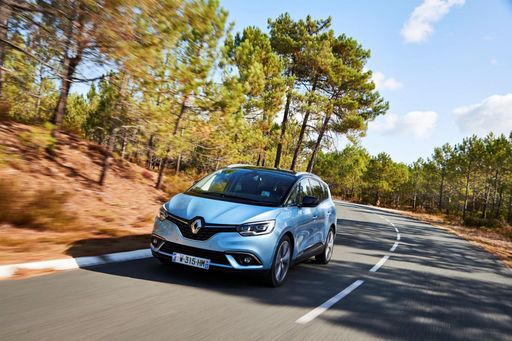 @ Renault
@ Renault
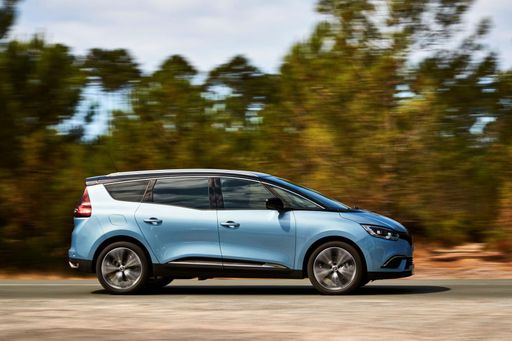 @ Renault
@ Renault
 @ Renault
@ Renault
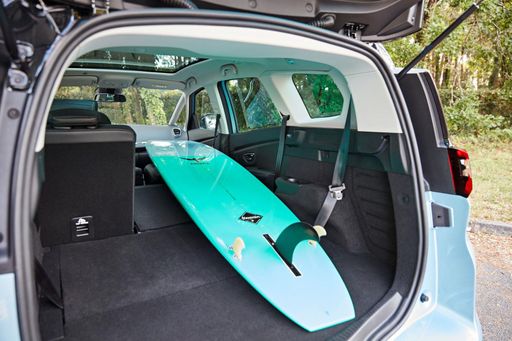 @ Renault
@ Renault
 @ Renault
@ Renault
Volvo XC60
The Volvo XC60 strikes a perfect balance between contemporary design and practical functionality, making it an appealing choice for those in search of a reliable and stylish SUV. Its interior showcases a blend of high-quality materials and innovative technology, ensuring a comfortable and seamless driving experience. With its emphasis on safety and environmental sustainability, the XC60 continues to stand out in the competitive SUV market.
details @ media.volvocars.com
@ media.volvocars.com
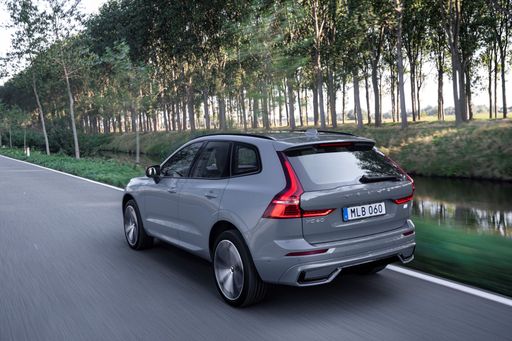 @ media.volvocars.com
@ media.volvocars.com
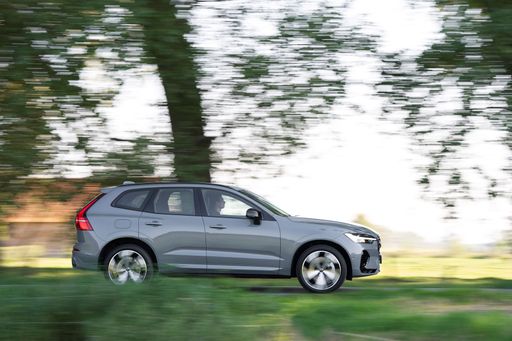 @ media.volvocars.com
@ media.volvocars.com
 @ media.volvocars.com
@ media.volvocars.com
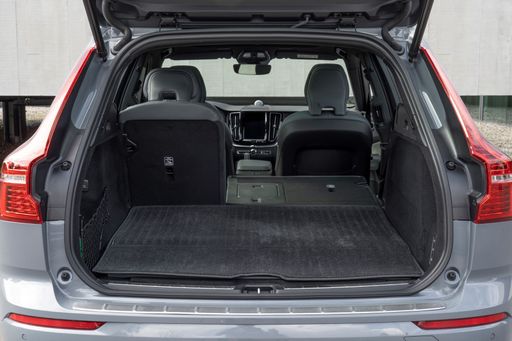 @ media.volvocars.com
@ media.volvocars.com
 @ Renault
@ Renault
|
 @ media.volvocars.com
@ media.volvocars.com
|
|
|
|
Costs and Consumption |
|
|---|---|
|
Price
34600 - 44000 £
|
Price
49200 - 75100 £
|
|
Consumption L/100km
-
|
Consumption L/100km
2.8 - 7.5 L
|
|
Consumption kWh/100km
16.6 - 17.5 kWh
|
Consumption kWh/100km
-
|
|
Electric Range
420 - 598 km
|
Electric Range
74 - 82 km
|
|
Battery Capacity
-
|
Battery Capacity
14.70 kWh
|
|
co2
0 g/km
|
co2
64 - 169 g/km
|
|
Fuel tank capacity
-
|
Fuel tank capacity
71 L
|
Dimensions and Body |
|
|---|---|
|
Body Type
SUV
|
Body Type
SUV
|
|
Seats
5
|
Seats
5
|
|
Doors
5
|
Doors
5
|
|
Curb weight
1822 - 1927 kg
|
Curb weight
1900 - 2150 kg
|
|
Trunk capacity
545 L
|
Trunk capacity
468 - 483 L
|
|
Length
4470 mm
|
Length
4708 mm
|
|
Width
1864 mm
|
Width
1902 mm
|
|
Height
1571 mm
|
Height
1651 - 1655 mm
|
|
Max trunk capacity
1670 L
|
Max trunk capacity
1528 - 1543 L
|
|
Payload
514 - 518 kg
|
Payload
510 - 550 kg
|
Engine and Performance |
|
|---|---|
|
Engine Type
Electric
|
Engine Type
Petrol MHEV, Plugin Hybrid
|
|
Transmission
Automatic
|
Transmission
Automatic
|
|
Transmission Detail
Reduction Gearbox
|
Transmission Detail
Automatic Gearbox
|
|
Drive Type
Front-Wheel Drive
|
Drive Type
All-Wheel Drive
|
|
Power HP
170 - 218 HP
|
Power HP
250 - 455 HP
|
|
Acceleration 0-100km/h
7.9 - 8.6 s
|
Acceleration 0-100km/h
4.9 - 6.9 s
|
|
Max Speed
150 - 170 km/h
|
Max Speed
180 km/h
|
|
Torque
280 - 300 Nm
|
Torque
350 - 709 Nm
|
|
Number of Cylinders
-
|
Number of Cylinders
4
|
|
Power kW
125 - 160 kW
|
Power kW
184 - 335 kW
|
|
Engine capacity
-
|
Engine capacity
1969 cm3
|
General |
|
|---|---|
|
Model Year
2025
|
Model Year
2025
|
|
CO2 Efficiency Class
A
|
CO2 Efficiency Class
F, B
|
|
Brand
Renault
|
Brand
Volvo
|
What drive types are available for the Renault Scénic?
Available configurations include Front-Wheel Drive.
The prices and data displayed are estimates based on German list prices and may vary by country. This information is not legally binding.
